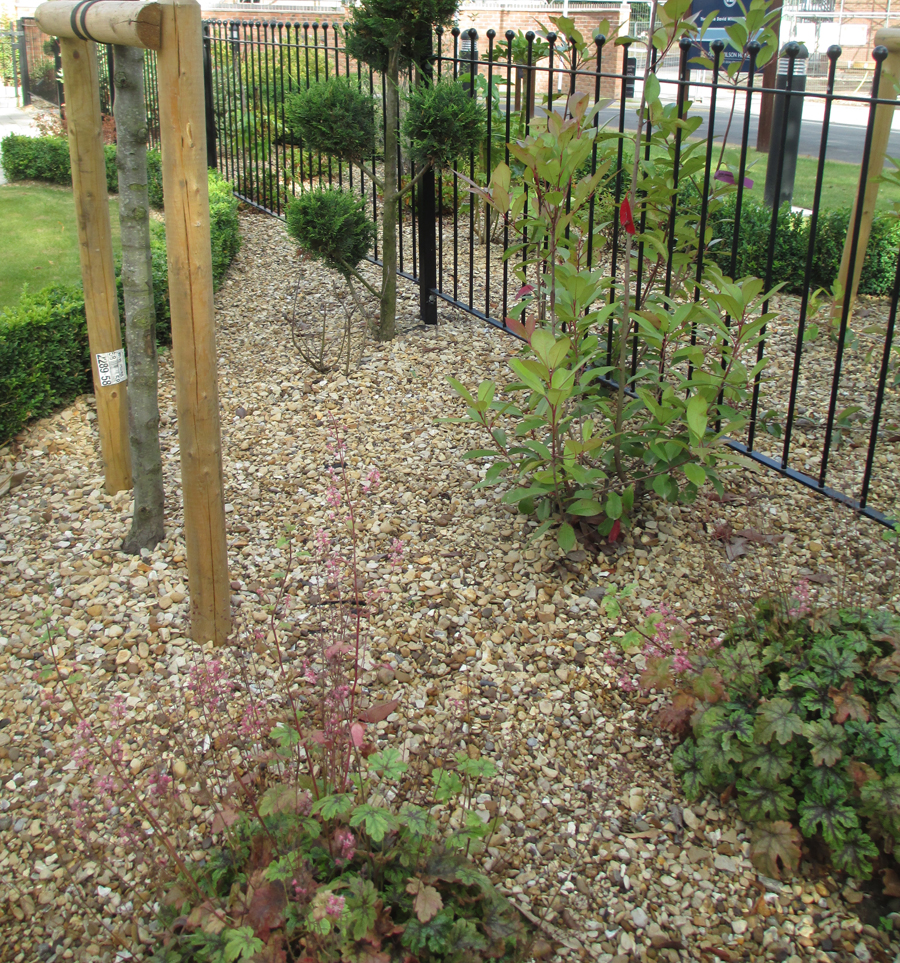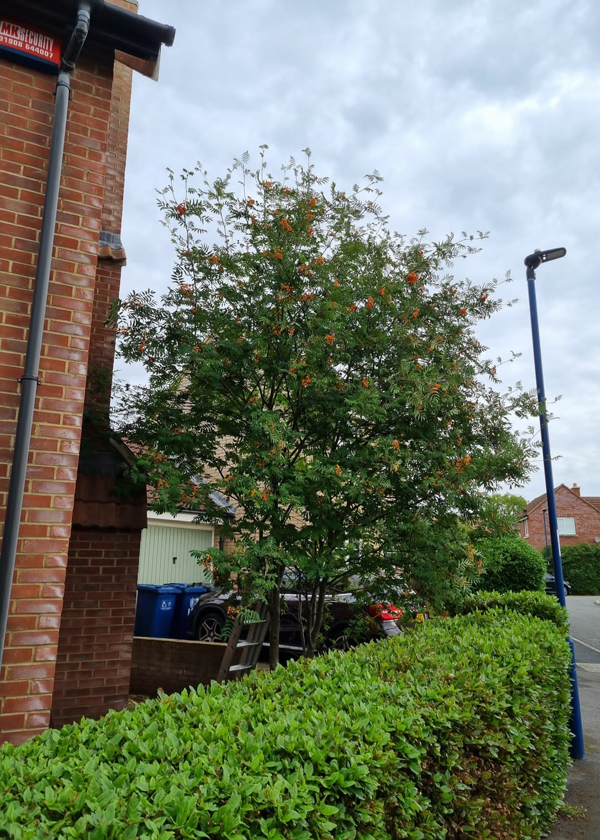Tree felling will be used in situations where there is a risk of damage occurring to any property or harm to the public. The work consists of the entire removal of the tree, in sections. If a delay between felling and stump removal is to occur, the stump will be left at a minimum height of about one and a half metres.
This tree was brought down in a storm
This tree was cut into smaller sections for ease of handling. Small branches can be put through a wood chipper to turn them into mulch, which can be used for decorative purposes or fertilizer. The larger branches and trunk were cut into logs for firewood.
TS Tree and Garden Services use a variable amount of machinery to carry out common tree tasks.
Please don't climb trees, call TS Tree and Garden Services.
We have all the safety equipment required so better call the experts than risk your safety.
Our team at TS Tree and Garden Services can customize planting needs to suit your requirements. This applies to young and adult trees.
The first step is deciding where to position the plant; this is known as marking or setting out.
Once an appropriate site is located we can then excavate the planting pit or pits. We will then place the tree into its hole and fill it with a suitable composition.

Gravel comes in all colours, shapes and sizes and makes interesting pathways and filling in between plants.
Stump removal consists of the complete removal of the stump and any lateral roots of the tree and may be undertaken either using hand tools or a machine (stump grinder)
Stump grinding involves the removal of stump to a specified depth, generally between 150m and 300m. Upon completion of stump removal, the remaining hole will be back-filled with soil or grinding waste to leave a level surface.
If a small stump is left, often chemicals are used to kill off the remaining stump, which will gradually rot.
The tree was removed and a small stump left, which has been treated and will gradually rot.
Crown thinning makes a tree more narrow while still maintaining its height. This process also allows more light to pass through the tree, as well as reducing wind resistance. Crown thinning also reduces the weight of the tree. It is useful in maintaining the healthy growth of a tree.
'Crown Lifting', as it is termed, is used to remove the smaller, lower branches of the tree. This allows the natural light to reach the ground, which is beneficial to the tree and the ground below it. It also allows access to the base of the tree, and avoids people catching themselves on the branches.
Sometimes the lower branches are removed to avoid walls or even where vehicles may be parked. By trimming the tree branches it also allows for air to flow and help maintain a healthy tree.
For safety reasons, it may also prevent children from climbing trees, which can lead to them falling. As trees grow higher their branches become thinner and children don't always realise the danger this can pose.

Removing the lower branches also provides some welcome shade in the summer months.
We trim trees to reduce their height.
Trees are generally trimmed back so they don't interfere with telephone cables. In some cases trees grow too high to manage or, if close to properties may block the natural daylight, making their properties dark.
Crown thinning makes a tree more narrow while still maintaining its height. This process also allows more light to pass through the tree, as well as reducing wind resistance. Crown thinning also reduces the weight of the tree.

In the process of reducing the height and thinning out the branches; the tree was starting to block the natural light out of the windows.